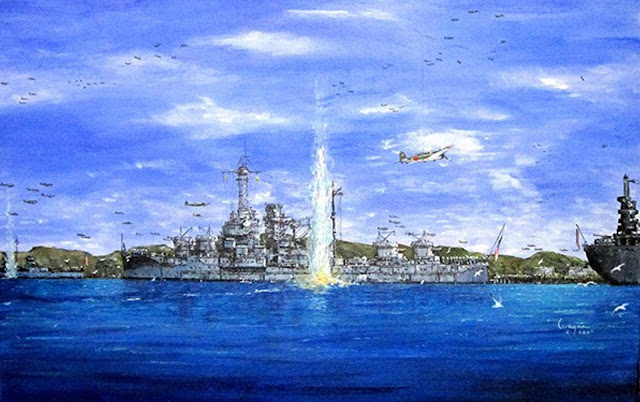
Perhaps one of the oddest tales surrounding the attack on Pearl Harbor is little Nancy...
The U.S.S. Utah, an American dreadnought battleship launched in 1912. She was the later half of a duo known as Florida class battleships, the first being U.S.S. Florida. These were the only ships built in this class of warship. She mounted 10 12-inch guns in 5 twin gun-turrets, three aft and two forward. Along with her sister ship Florida, Utah was one of the most powerful ships representing the American arsenal of sea power in the first decades of the 20th-century.
By 1930, with changes coming to the Navy under the terms of the London Naval Treaty, Utah was downgraded to a less-than-stellar role....she was to become a radio-controlled target ship. Recommissioned AG-16 on April Fool's Day, 1932, U.S.S. Utah would now play the role of the hunted, allowing naval and naval air assets to practice and hone their deadly business.

58 men lost their lives on Utah that day. Compared to casualties suffered on other ships, far more of her crew survived, 461, with four pulled out from the bottom of the ship after she capsized and turned over. Quick action by Commander Solomon Isquith, who heard the knocking of these crewmen, had the men grab an acetylene torch from the cruiser Raleigh (moored just ahead of Utah) and cut them out from the belly of the ship.
There's one more in addition to the officers and men entombed on Utah, baby Nancy. Chief Yeoman Albert Wagner was there on that fateful December day....and so was his daughter. Little Nancy Wagner, along with her twin sister Mary on the 29th of August, 1937 in the Philippines where Chief Wagner was stationed at the time. Both were born prematurely, Mary lived, but Nancy died after two days. She was cremated, and when her Dad was reassigned to U.S.S. Utah, Nancy in her little urn went with him in preparation for a burial at sea. Once the Utah set out to sea from Pearl Harbor on her next orders, Chief Wagner planned on completing this much delayed ceremony for his child. Utah would never leave the harbor again.
On December 7th, 1941, Nancy's ashes sat in Chief Wagner's locker the Chief's quarters aboard U.S.S. Utah. As the first bombs and torpedoes rocked Pearl Harbor and the Utah, Chief Wagner has absolutely no time to think about collecting his daughter's urn as sailors aboard were abandoning a ship which was flooding very quickly. A few weeks later, divers were send down to see if the urn containing Nancy's ashes could be recovered, but the Chief's quarter were so badly damaged and crumpled, there was no way even to swim in, much less get to Wagner's' locker where the remains sit to this day, guarded by the 58 officers and seamen went down with their ship...




